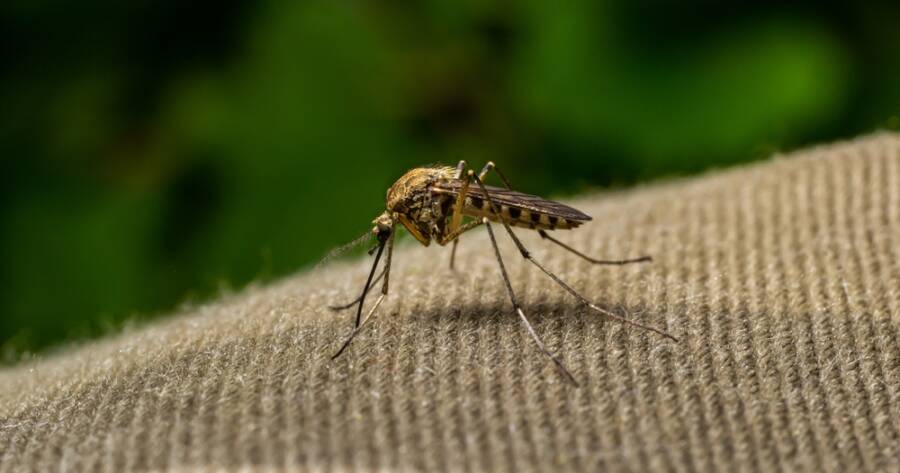Eastern Equine Encephalitis (EEE) is a rare, severe viral disease affecting humans and animals, transmitted by mosquitoes. Found in swampy areas of the Eastern and Gulf Coast U.S., EEE has a high fatality rate and can cause neurological damage. Understanding risks and prevention is crucial.
What is Eastern Equine Encephalitis (EEE)?
Eastern Equine Encephalitis is caused by a virus belonging to the Alphavirus genus, which is transmitted to humans and animals through the bite of an infected mosquito. The virus is maintained in nature through a bird-mosquito cycle, primarily in freshwater hardwood swamps. While birds serve as the primary hosts, infected mosquitoes can occasionally bite mammals, including horses and humans, leading to illness.
EEE is considered one of the most severe mosquito-borne diseases in North America, with a fatality rate of approximately 30-50% in humans who contract the virus.1 In horses, the disease is nearly always fatal.
The virus is most commonly found in states along the Atlantic and Gulf Coasts, as well as in the Great Lakes region, but outbreaks have been reported in other areas as well. The risk of transmission is highest during the warmer months when mosquitoes are most active, typically from late spring through early fall.
Symptoms of EEE: What to Watch For
The symptoms of EEE can vary widely in severity, from mild flu-like symptoms to severe neurological impairment. The virus has an incubation period of 4 to 10 days after being bitten by an infected mosquito. Initial symptoms often include fever, chills, headache, and muscle aches. These early signs can progress rapidly, especially in severe cases.2
In more serious cases, EEE can lead to encephalitis, an inflammation of the brain, which can cause symptoms such as confusion, seizures, and coma. Approximately one-third of people who develop encephalitis due to EEE die from the infection, and survivors often face long-term neurological problems, including cognitive impairment, personality changes, and physical disabilities. Due to the rapid progression and potential severity of the disease, early medical intervention is crucial.
Horses infected with EEE exhibit similar symptoms, including fever, lack of coordination, and behavioral changes. Unfortunately, EEE is almost always fatal in horses, making vaccination and prevention efforts critical for equine health.
Diagnosis and Treatment of EEE
Diagnosing Eastern Equine Encephalitis in humans typically involves a combination of clinical examination and laboratory testing. Because the early symptoms resemble those of other viral infections, such as West Nile Virus, healthcare providers rely on specialized tests to confirm the presence of EEE. This may include blood tests or analysis of cerebrospinal fluid (CSF) to detect antibodies against the virus.
Unfortunately, there is no specific antiviral treatment for EEE. Care for infected individuals is primarily supportive, focusing on managing symptoms and preventing complications. This may involve hospitalization, pain management, and interventions to reduce brain swelling in severe cases. While the lack of a targeted treatment makes prevention even more critical, early recognition and medical care can improve the chances of recovery and reduce the risk of severe complications.
Prevention: How to Protect Yourself from EEE
Preventing mosquito bites is the most effective way to protect yourself from Eastern Equine Encephalitis. Here are some essential preventive measures to minimize your risk:
- Use insect repellent: When spending time outdoors, particularly during dawn and dusk when mosquitoes are most active, apply insect repellent containing DEET, picaridin, or oil of lemon eucalyptus. These repellents can significantly reduce the risk of mosquito bites.3
- Wear protective clothing: Long sleeves, pants, and hats can provide a physical barrier between you and mosquitoes. Light-colored clothing is less attractive to mosquitoes and can help you spot them more easily.
- Avoid peak mosquito activity times: Mosquitoes are most active at dawn and dusk, so limiting outdoor activities during these times can reduce your exposure.
- Eliminate standing water: Mosquitoes breed in stagnant water, so regularly emptying water from items like flowerpots, birdbaths, and gutters can help reduce mosquito populations around your home.
- Install screens: Ensure that windows and doors have properly fitted screens to keep mosquitoes from entering your home.
For horse owners, vaccination is the most effective way to protect horses from EEE. Regular vaccinations, along with mosquito control efforts around barns and stables, can help reduce the risk of infection in equine populations.
Find Help Today!
Eastern Equine Encephalitis may be a rare disease, but its potentially devastating impact on both humans and animals makes it a significant concern. With a high fatality rate and the risk of severe neurological damage in survivors, EEE highlights the importance of preventive measures to reduce the risk of infection. By taking simple steps to protect yourself from mosquito bites and staying informed about local EEE activity, you can help safeguard your health and the well-being of your community.
